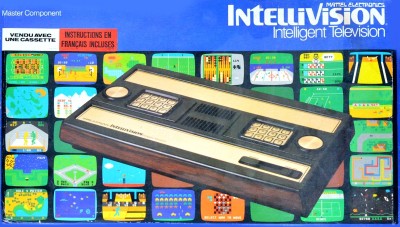
In my last article, I briefly covered Utopia, a game some considered an “ancestor” of RTS. In this article I want to cover a few Intellivision multiplayer-only games that are not the usual focus of my blog, but that I checked nonetheless to prepare for an upcoming article.
Before starting, a warning: emulating Intellivision multiplayer games is tricky. Not for lack of emulators, there are some very slick emulators out there (I recommend Pantheon for a plug & play experience), but due to the specific controller of the Intellivision :

It turns out it is difficult to bind on a modern keyboard or gamepad the keys for two complete numpads in addition to the “disks” at the bottom of the controller, so I only tested the games, rather than played them for real.
Sea Battle (1980)
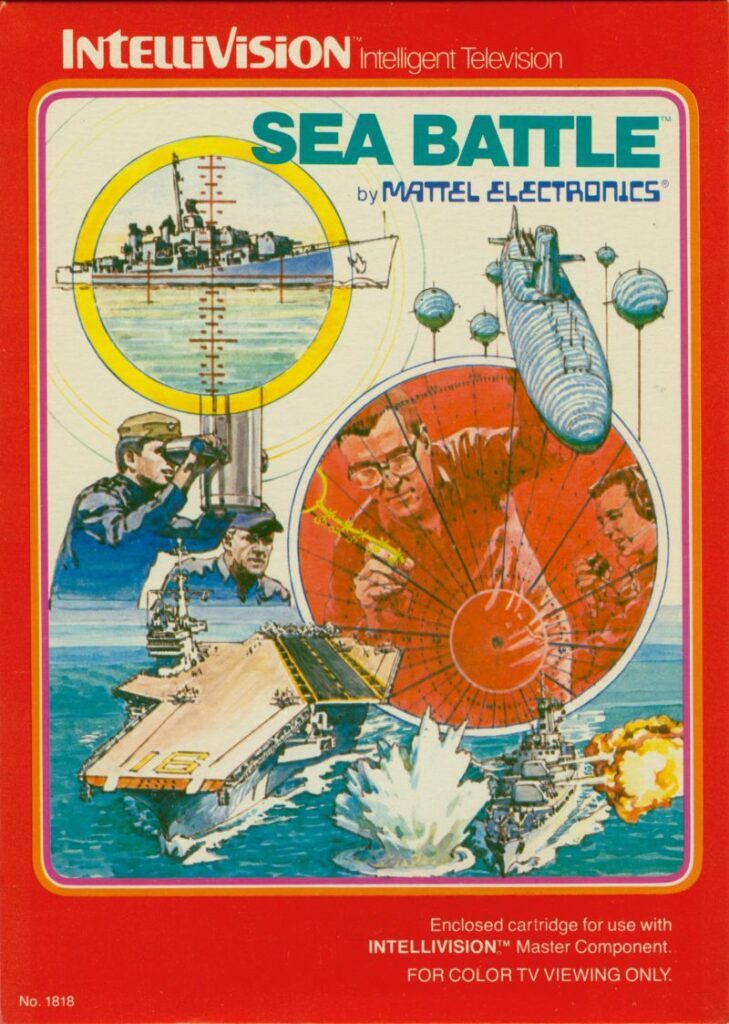
Sea Battle is the other Intellivision game that receives the most mentions as “first RTS.” The objective of Sea Battle is to occupy the other player’s harbour with either a carrier or a transport ship.
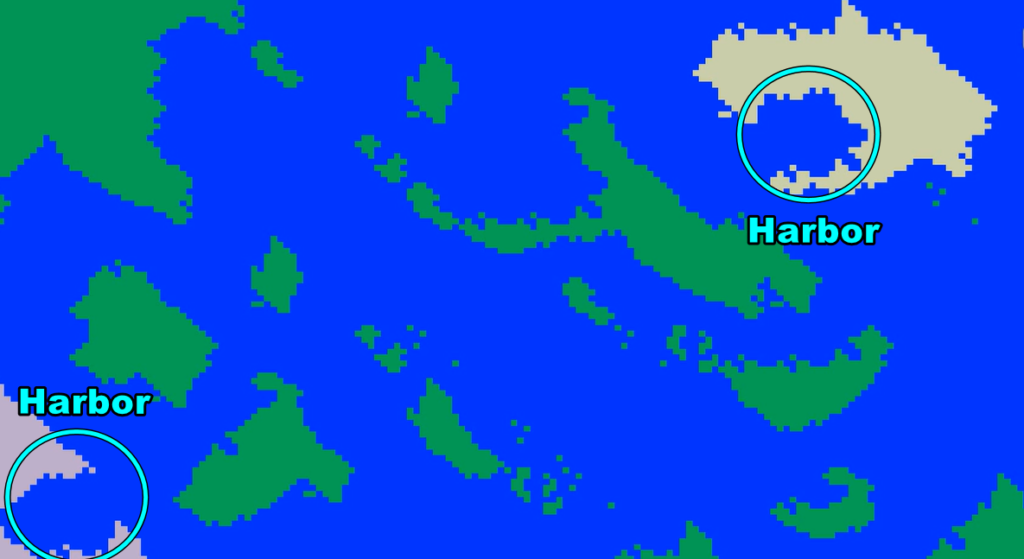
For this purpose, both players have a reserve of ships of various types they can call. Fleets are made up of 1 to 3 ships, each of a different type. Several fleets can be active and even be moved at the same time :
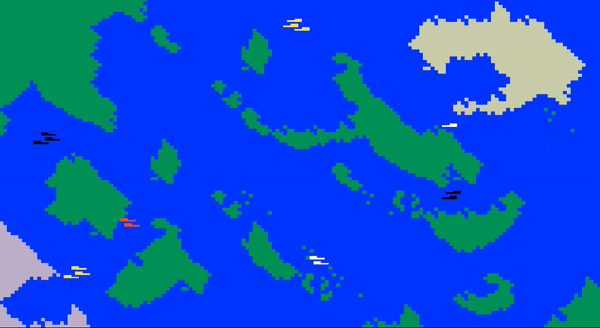
Moving several fleets at the same time is possible because a fleet will move in the direction it is ordered to until it meets an obstacle, so by jumping from one fleet to another it is possible to organize a complex attack. Happily enough, hitting the ground has no negative effect on the strategic map, except the time needed to go around individual green pixels that block the way.
When two hostile fleets meet, one of the players can accept combat, which is resolved in real-time in a battlefield that looks like the part of the strategic map where the battle occurred.
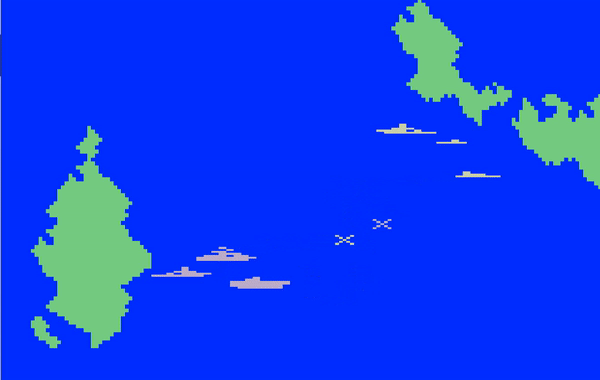
Several ships can be moved at the same time, since just like on the strategic map the ships keep drifting according to the last order given to them. But extra ships cannot shoot, are hard to control and are damaged if they hit land, so in practice you will only move your extra ships away from combat, as a reserve of sort. From what I understand, veteran players only ever used fleets with one ship (minesweepers excepted), the rest of the ships being sitting ducks against a good player in combat.
There is a limited counter system between the ships, for instance a battleship is going to have an hard time avoiding the torpedoes from a PT boat, and is not any better at sinking said PT boat than a destroyer is.
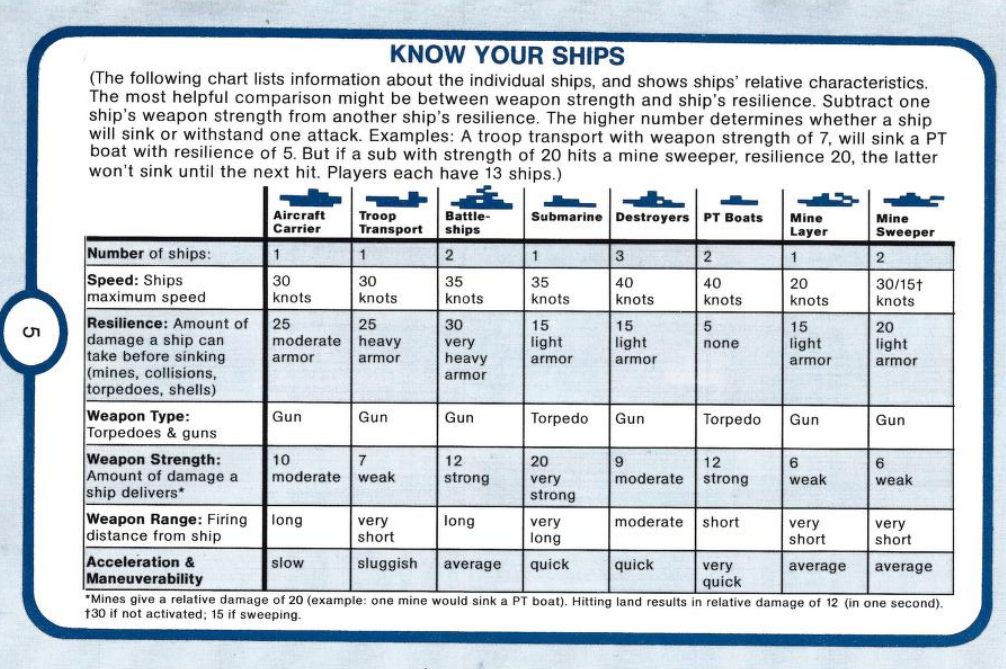
Of course, minelayers and minesweepers have their own strategic roles. Minelayers can lay up invisible and devastating (damage 20!) minefields on the strategic map, up to 4 minefields by side. Minefields can be swept by the minesweeper, otherwise the only solution is to avoid them.
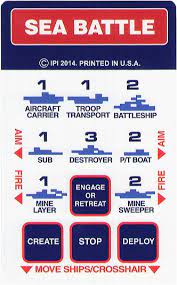
Sea Battle was developed by Aph Technological Consulting, a company hired by Mattel to build most of the software around the Intellivision, and which itself subcontracted to students and graduates of the California Institute of Technology. The author was more specifically a CalTech student called Ken Smith, who gave all the context in an interview with The Intellivisionaries Podcast. Amusingly, Smith explains that he was given the assets for the ships first, and then asked to make a game around them. Smith only coded four video games for Intellivision between 1978 and 1980, and then one game for Atari 2600 in 1982 – all of these were sports games except Sea Battle. He subsequently went into more complex ventures – notably playing a key role in the Mars Exploration Rover landing.
Overall, Sea Battle has a “real-time strategy” feel, with simultaneous movement on the world map, a “counter-system” between the different types of ships, and chokepoints. I would not call it an RTS in the modern sense quite yet: it is lacking a resource management layer and relies too much on “arcade” skill during the tactical battles. Still, it has in my opinion a stronger claim to being the ancestor of RTS than any other PC game from 1980 or even 1981.
Land Battle (1982/1998)
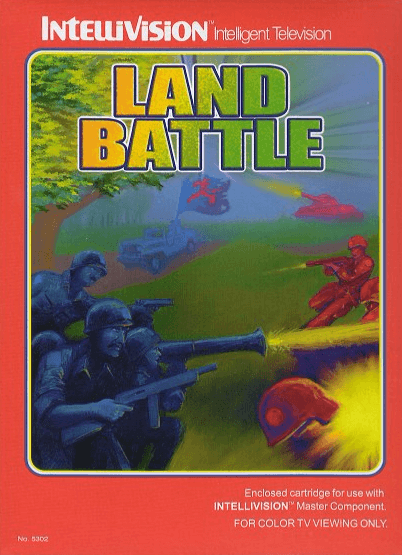
For my article, I had planned to stop at Sea Battle, but then I also stumbled across Land Battle. While not a Ken Smith creation, Land Battle plays a lot like an expanded version of Sea Battle on land. To start with, where Sea Battle had only one map, Land Battle lets you choose between 999 maps, though granted they all have the same pattern: roads, towns and a bit of forest, lake or field in between.
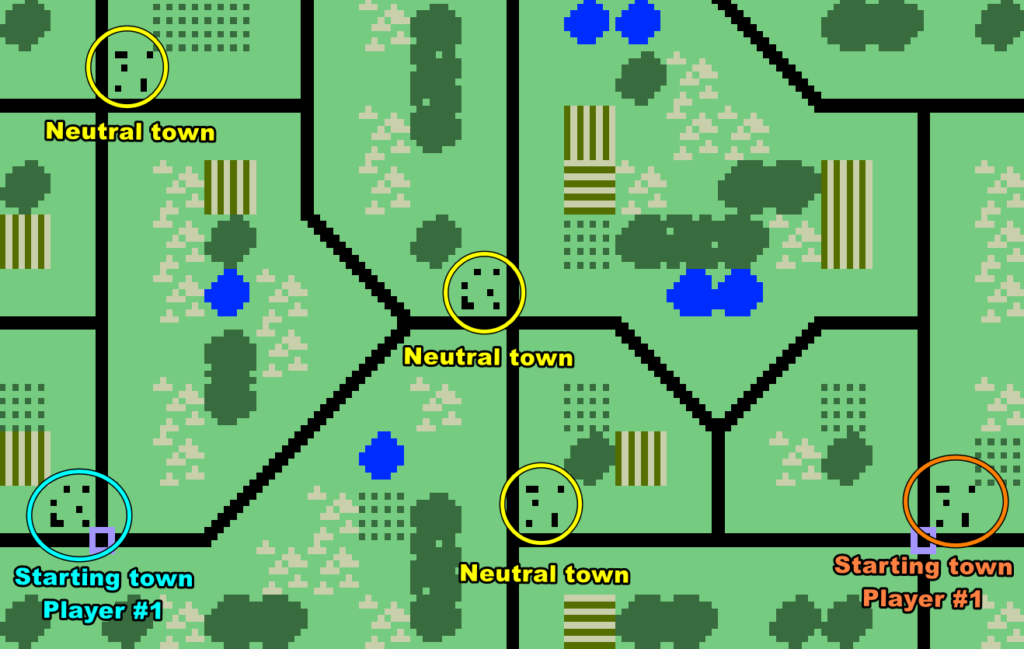
The objective of each player is to destroy the opposing player’s flag unit by creating “patrols” of up to 3 units (between infantry, bazooka, mortar, artillery, tank, APC and of course the flag unit).
All units can move off-road except the APC, on the other hand any group with an APC or a tank will move at double speed on road.
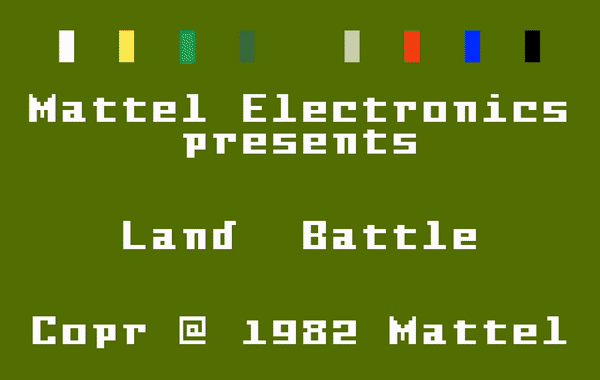
You can occupy towns by transferring one of your units to it. After you do, the town will slowly fill up with troops.
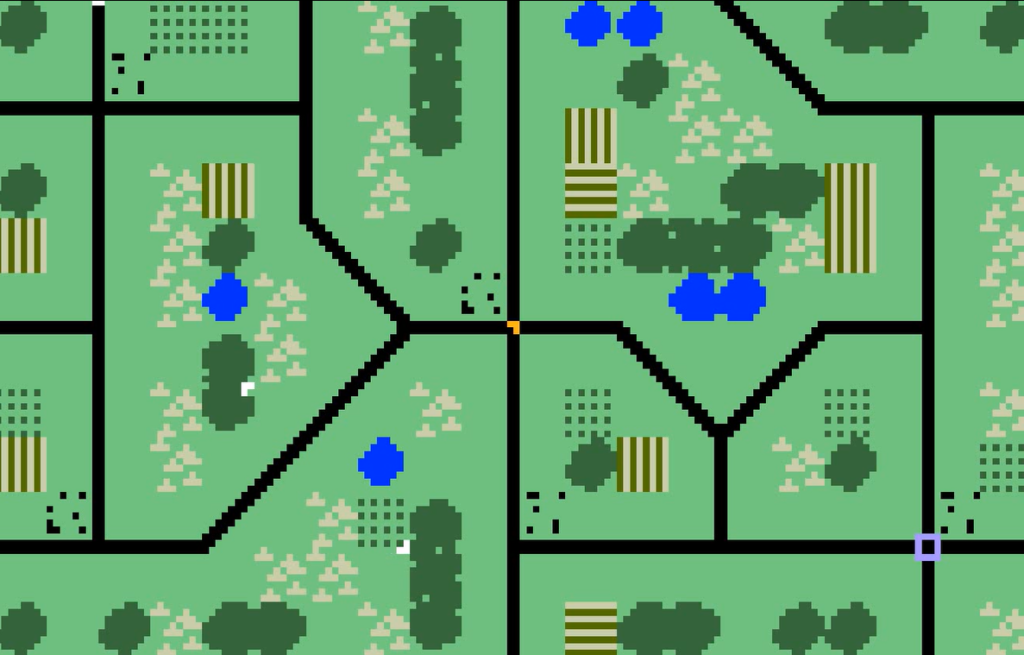
When two opposing patrols meet, one of the players can accept combat. The controls are actually different from Sea Battle, probably easier with the Intellivision controller, but pretty much impossible to play with two players on one keyboard, so please accept the following ballet as an example of how it plays :
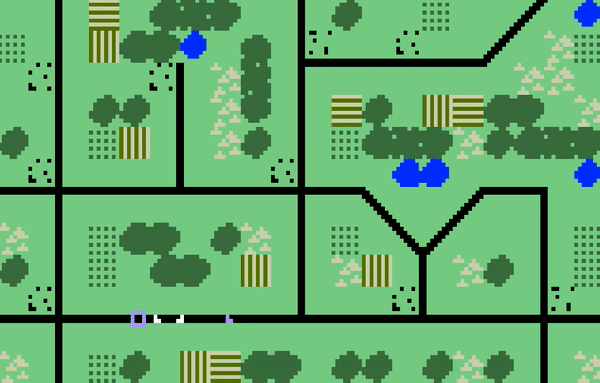
To capture towns controlled by the other player, you can siege them. After 10 seconds when nothing happens, leaving the defender time to sortie troops or bring reinforcements, the garrison starts taking losses, until it is totally wiped out or surrenders, in the latter case transferring its asset to the besieger.
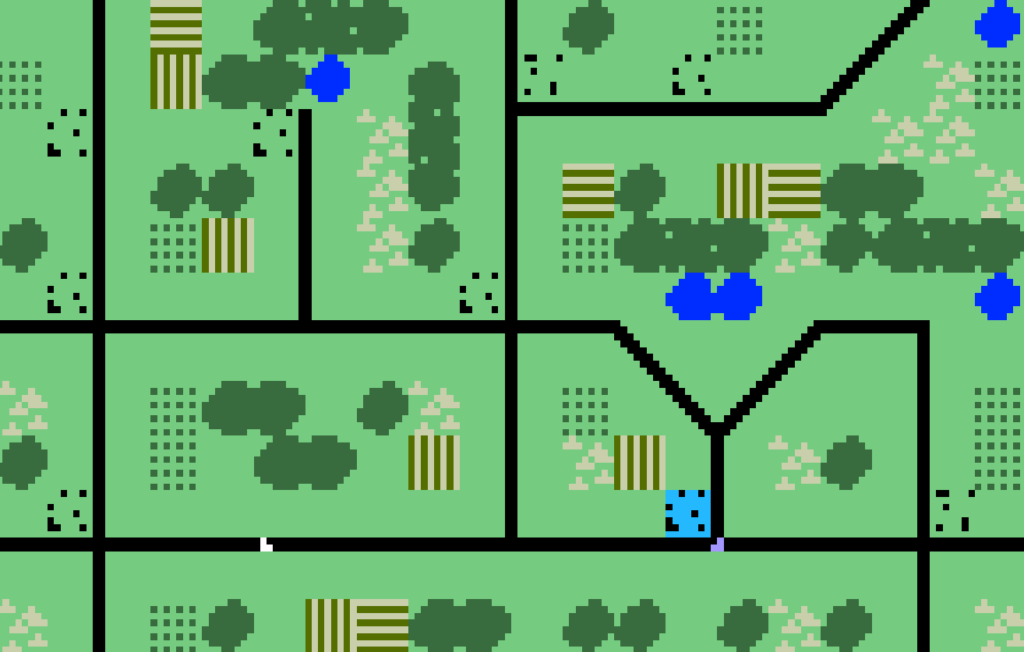
I suspect those sieges are the most reliable ways to destroy the flag units, since there are very few reasons to assign the flag unit to a patrol.
So that’s it. Mid-1982 we have a game that has everything expected from an RTS: different types of terrains, plenty of maps, units with different behaviours, control of towns, production, and even artillery that you can deploy on the strategic map for support during tactical battles, so why is it not the first RTS? Well, the game was finished in 1982… but not released then. According to this page, when the game was finished Mattel looked at it and deemed it unlikely to be successful, especially since it required extra RAM to play. Extra RAM could have been embedded directly in the game cartridge, but at a cost. Mattel took the decision to use Land Battle as a basis for a game for their future Entertainment Computer System, but the latter failed, and so Land Battle remained unreleased for decades.
What could have been a particularly clear-cut case of RTS was only released in 1998, as part of an Intellivision Lives! collection for Windows. It also creates some difficulty for video game archaeologists: I believe I played a 1982 version, or a 1998 version exactly similar to the 1982 version, but I cannot be sure, and maybe some features were modified on the way.
Takeover (1982/1998)
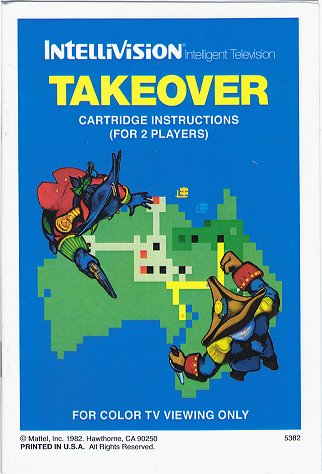
Takeover is the last Intellivision wargame I could identify and a significantly more abstract game. Each player starts with a city and an army in a random location on one of the four maps available in the game :
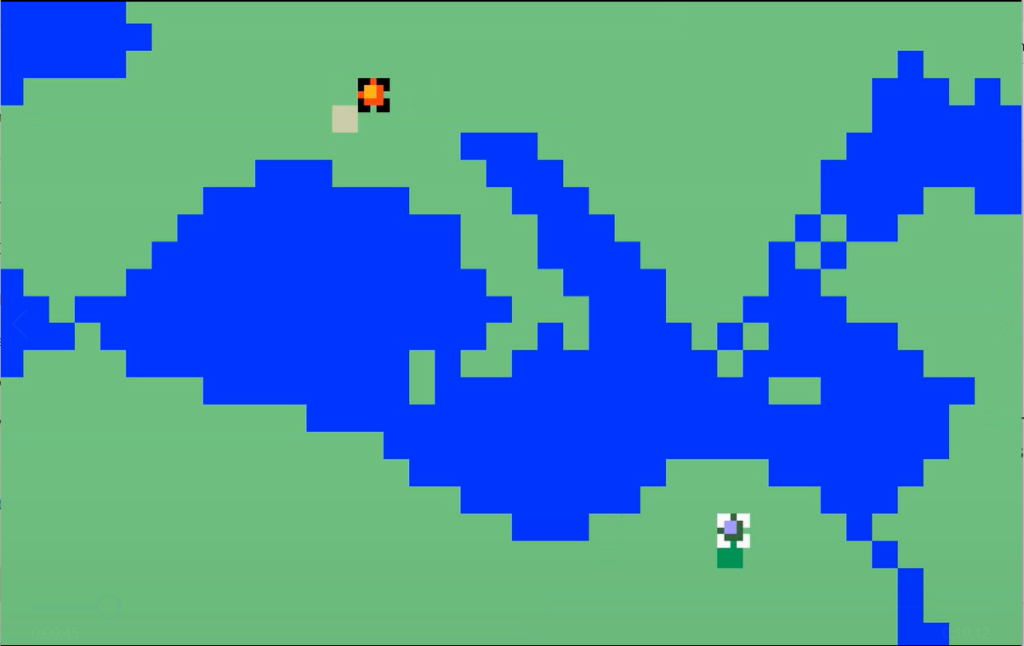
The objective is obviously for each player to take the opposing player’s capitole. But a direct attack will not work, instead the players can send their armies around so they can found cities – the only condition is that they must be 3 tiles away from another city. Each city then generates and maintains exactly one army which is automatically replaced after some time if destroyed. The two first cities near water tiles will also generate fleets :
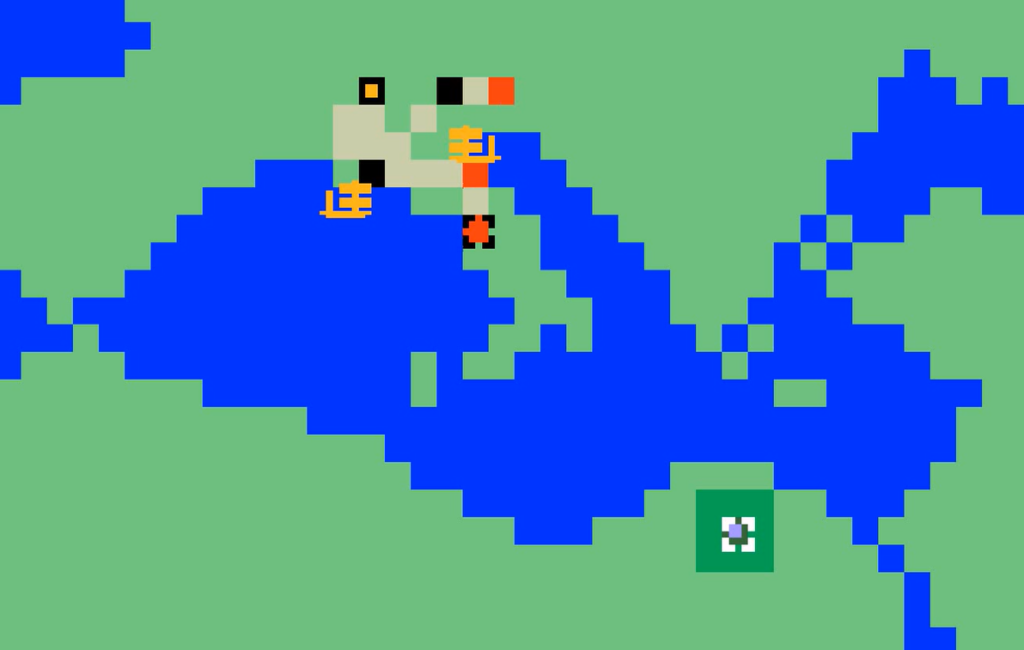
Movement is incredibly slow (around 20 seconds per tile), but the armies generate around them and behind them tan tiles of “settled territories” where movement is faster. Each player also has a road builder, though these move (as they build) even slower.
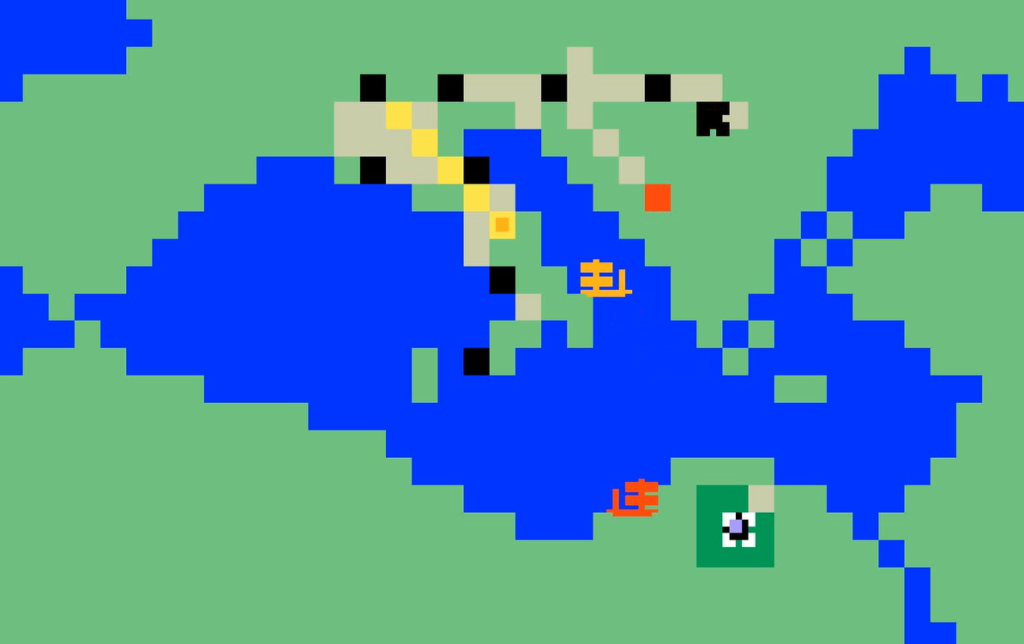
Of course, even with slow movement, the number of cities & armies grows exponentially, so you will be busy. But since I am not doing a real match, let me skip to my landing :
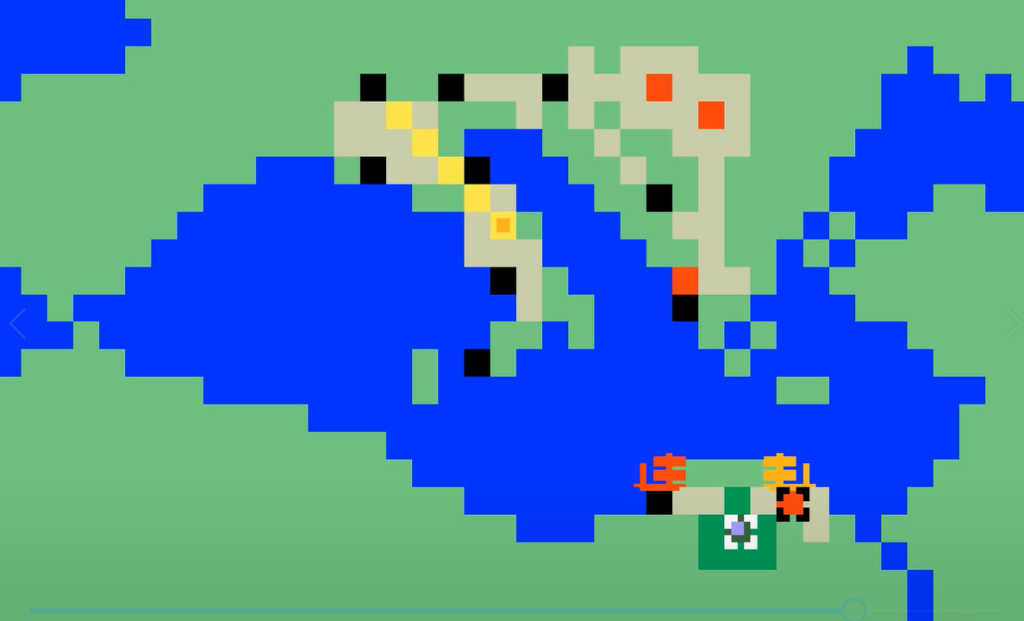
And now you have seen that the game supports naval operations, let’s skip to the end screen after I took that one hostile but inactive city :
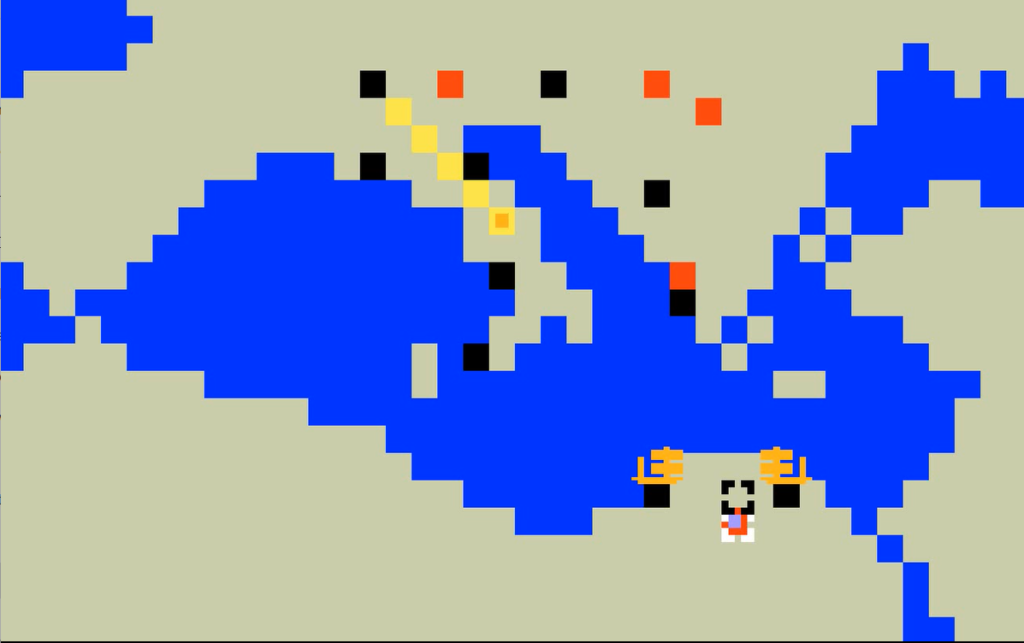
Takeover is very different from what we think of when we think of “RTS”, and is halfway toward an abstract strategy game like Chess. In any case, it suffered the same fate as Land Battle: finished in 1982, it was not released until 1998 as part of the same Intellivision Lives! compilation.
Bonus BRIEF : War of Nerves! (1979)
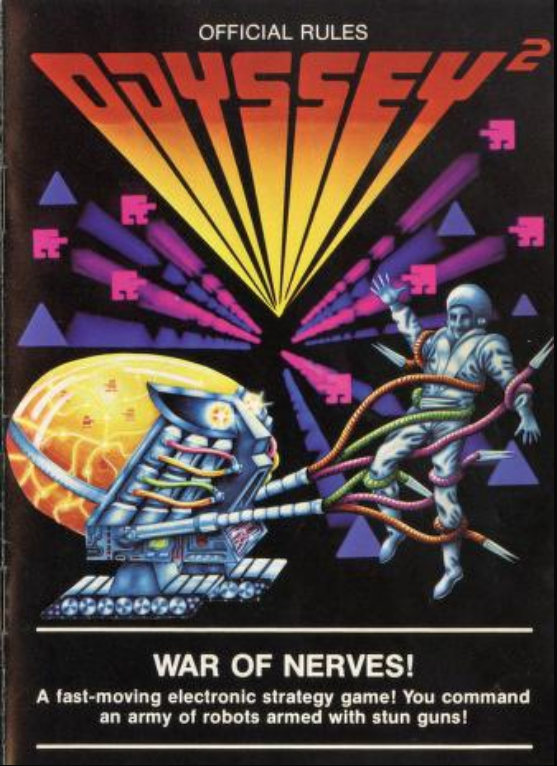
There is one last irritating game that I would like to cover in this already long article: War of Nerves! for the Magnavox Odyssey 2 console.
War of Nerves! features two generals and their army of 4 robots each fighting for a piece of forest. The objective is to have one of your robots touch the enemy general, keeping in mind that robots can shoot to neutralize one another and that generals can repair neutralized robots.
Here is what a complete battle looks like (accelerated 30%, I am top-left) :
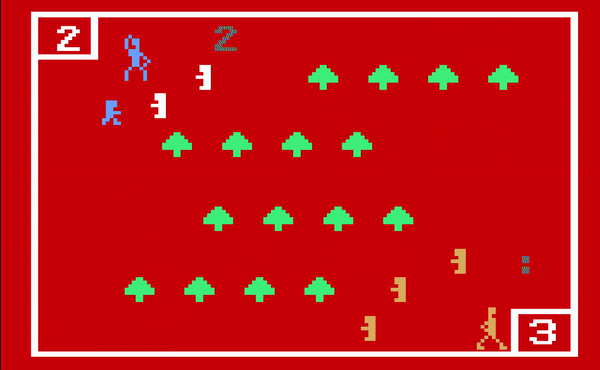
You only control the movement of your general and your rallying cry, with which you can ask your robots to regroup near you. Everything else is computer-controlled, including the attacks by your robots.
The reason I am mentioning what is obviously an arcade game is that it managed to sneak its place at the top of Wikipedia’s list of RTS (source for its addition to Wikipedia: a defunct site called allgame.com which had classified it as “2D Real-Time Strategy”). From there it disseminated: every videogame journalist or YouTuber who wanted to create a short bit of content about early RTS is going to check Wikipedia and then cover or at least mention War of Nerves! as “the first real-time strategy game”, creating, I am sure, sources for Wikipedia editors to claim that yes, it deserves to be in the list. Well, it does not.
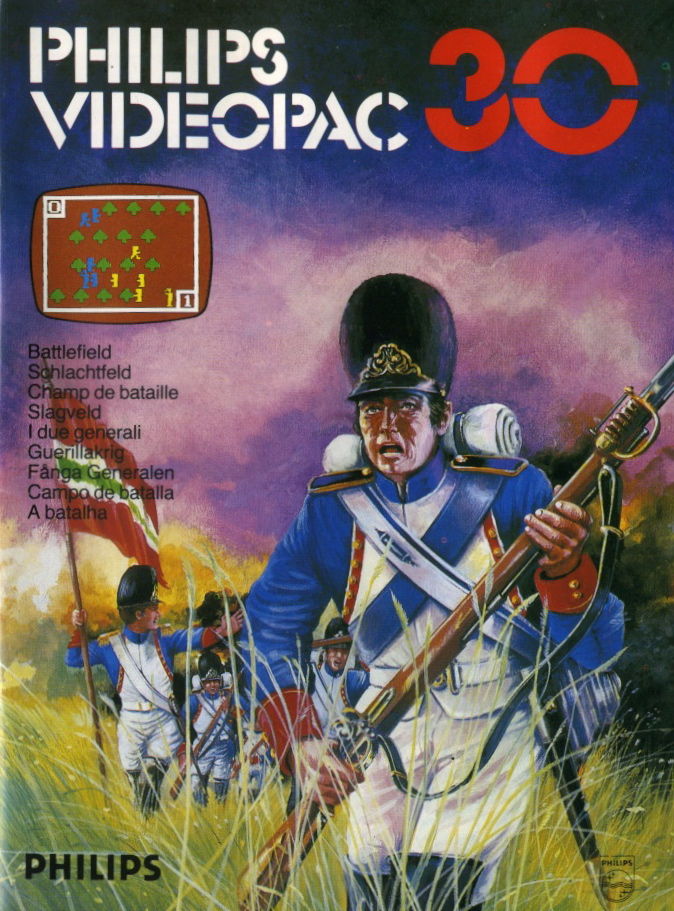
This is all for the early console multiplayer detour. Such a detour has been an exception, and I don’t plan to make a habit of covering multiplayer-only or console games in the future. I am going back to the normal schedule, with the peculiar Cosmic Conquest (a key reason for that detour) and then I will finish 1982 with Battle for Normandy, a good old Panzers vs Rangers turn-based game.
2 Comments
“it managed to sneak its place at the top of Wikipedia’s list of RTS ”
It sounds like you weren’t able to edit Wikipedia because you are using original research, but you sure wish someone would edit it for you XD
A shame that blogs can’t really be used as sources on Wikipedia…